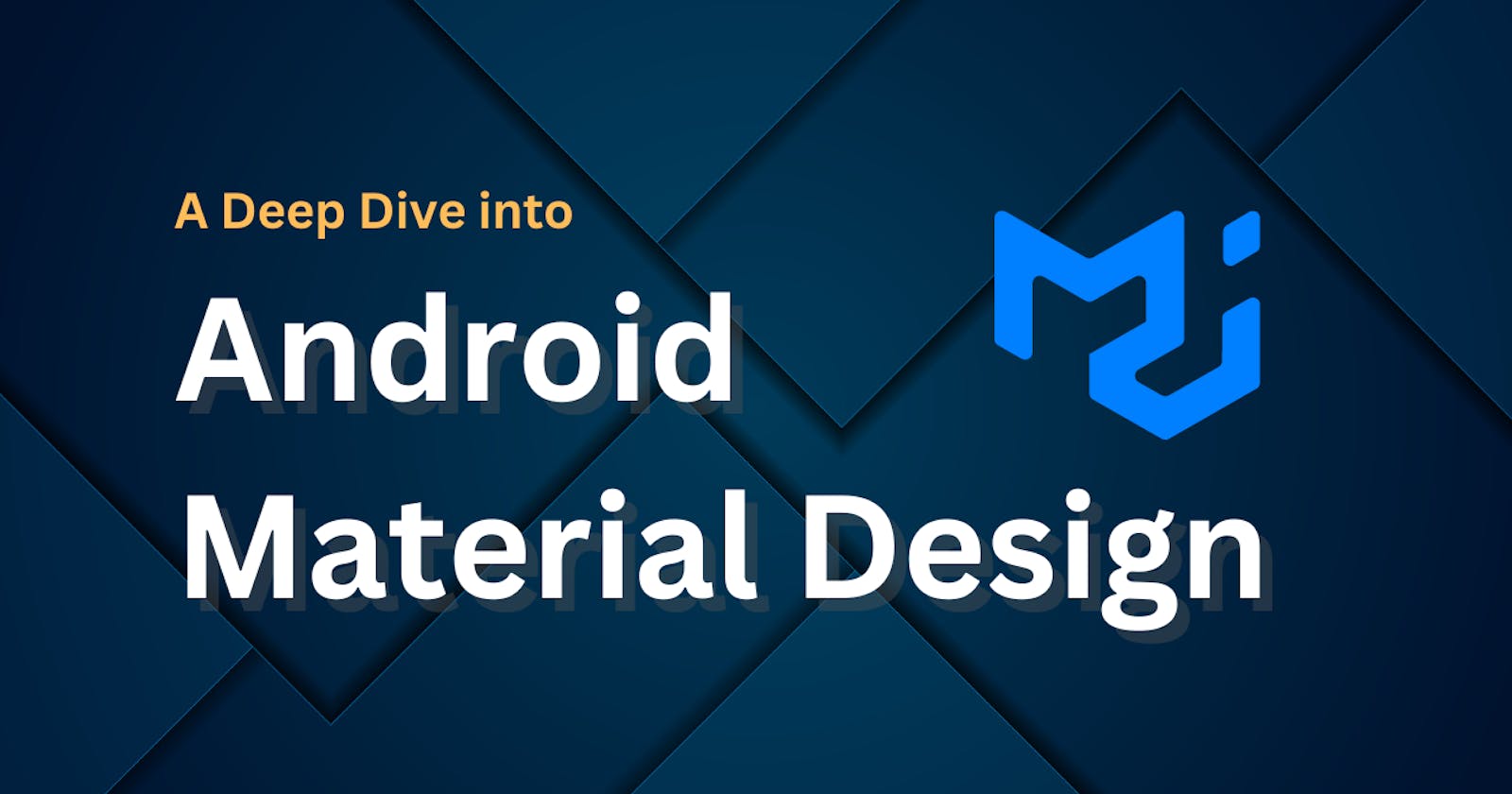Embracing Modern Aesthetics: A Deep Dive into Android Material Design
Introduction:
In the ever-evolving landscape of mobile app development, aesthetics play a pivotal role in user experience. Google's Material Design, introduced in 2014, has become a guiding principle for creating visually appealing and intuitive Android applications. This blog post explores the key elements of Material Design and how developers can leverage its principles to craft engaging and consistent user interfaces.
Understanding Material Design:
Material Design is not merely a visual style; it's a design language that embraces the principles of realism, motion, and interactivity. Its goal is to provide a unified experience across various platforms and screen sizes. Let's delve into its core components:
1. Material: The Foundation
At the heart of Material Design is the concept of "material," a metaphorical representation of physical objects in the digital realm. The material is designed to respond to user interactions, casting shadows, and maintaining a sense of depth and hierarchy.
2. Bold Colors and Typography:
Material Design encourages the use of bold and vibrant colors to convey information and establish hierarchy. The color palette is carefully chosen to create a visually harmonious experience. Additionally, a clear and legible typography system ensures that users can easily consume content.
3. Responsive Layouts:
Creating responsive layouts is a cornerstone of Material Design. The use of a flexible grid system allows developers to build interfaces that adapt seamlessly to different screen sizes and orientations. Responsive layouts contribute to a consistent experience across a diverse range of devices.
Implementing Material Design in Android:
Now that we've explored the core principles of Material Design, let's discuss how developers can implement these concepts in Android app development:
1. Material Components Library:
Google provides the Material Components Library, a set of pre-designed UI components that adhere to Material Design guidelines. This library includes buttons, cards, navigation drawers, and more, streamlining the development process and ensuring visual consistency.
2. Motion and Animation:
Material Design places a strong emphasis on motion and animation to create delightful and intuitive user experiences. Developers can use shared element transitions, elevation changes, and subtle animations to guide users through the app and provide feedback on their interactions.
3. Navigation Patterns:
Material Design introduces intuitive navigation patterns, such as the Bottom Navigation Bar and the Navigation Drawer. These patterns help users navigate seamlessly between different sections of the app while maintaining a sense of context.
4. Theming and Customization:
Material Theming allows developers to customize the look and feel of their apps while still adhering to Material Design principles. This flexibility enables the creation of branded and visually distinct applications within the Material Design framework.
Best Practices and Future Trends:
As with any design language, staying informed about best practices and emerging trends is crucial. Material Design continues to evolve, and developers should keep an eye on Google's updates and announcements. Some current best practices and trends include:
Dark Mode: With the increasing popularity of dark mode, incorporating this feature into Material Design can enhance user comfort and conserve device battery life.
Accessibility: Prioritizing accessibility ensures that your app is usable by individuals with diverse needs. Material Design provides guidelines for creating accessible interfaces.
Microinteractions: Delicate animations and microinteractions add a layer of finesse to your app, making it more engaging and enjoyable for users.
Conclusion:
In conclusion, embracing Android Material Design is not just a design choice but a commitment to providing users with a visually pleasing, intuitive, and consistent experience. By incorporating the principles of material, bold colors, responsive layouts, and leveraging the Material Components Library, developers can create modern and user-friendly Android applications. As Material Design continues to evolve, staying informed about updates and best practices will ensure that your apps remain at the forefront of design excellence.

